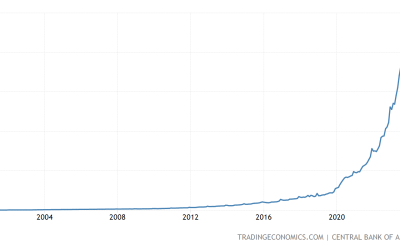
Now that the federal government is playing an ever larger role in the economy, a look at Washington’s track record seems to be long overdue.
The release of the Federal Reserve Board’s transcripts of its deliberations back in 2007 shows that their economic prophecies were way off. How much faith should we put in their prophecies today — or the policies based on those prophecies?
Even after the housing market began its collapse in 2006, Federal Reserve Chairman Ben Bernanke said in 2007, “The impact on the broader economy and financial markets of the problems in the subprime market seems likely to be contained.”
It turned out that financial disasters in the housing market were not “contained,” but spread out to affect the whole American economy and economies overseas. Then Chairman Bernanke said: “It is an interesting question why what looks like $100 billion or so of credit losses in the subprime market has been reflected in multiple trillions of dollars of losses in paper wealth.”
What is an even more interesting question is why we should put such faith and such power in the hands of a man and an institution that have been so wrong before.
This is not just a question of a bad guess by Ben Bernanke. The previous chairman of the Federal Reserve System, Alan Greenspan, likewise misjudged the consequences of the housing boom and bust. Nor was the Federal Reserve’s staff any more accurate in its prophecies. According to the New York Times, “The Fed’s own staff still forecast that the economy would avoid a recession.”
Today, the economy has not yet fully recovered from the recession that the Federal Reserve System’s staff and chairmen thought we would avoid.
We all make mistakes. But we don’t all have the enormous and growing power of the Federal Reserve System — or the seemingly boundless confidence that Fed Chairman Ben Bernanke still shows as he intervenes in the economy on a massive scale.
Not only does the Federal Reserve System control the money supply and regulate banks, the Fed’s willingness to keep buying hundreds of billions of dollars’ worth of government bonds makes it easier for the Obama administration to keep engaging in massive deficit spending that runs up a record-breaking national debt.
The reason that the Federal Reserve can afford to continue buying huge amounts of government bonds is that the Fed is authorized to create its own money out of thin air. They use the fancy term “quantitative easing,” instead of saying in plain English that they are essentially just printing more money.
Being wrong is nothing new for the Federal Reserve System. Since this year is the one hundredth anniversary of the Fed’s founding, it may be worth looking back at its history.
President Woodrow Wilson explained the reasons for creating the Federal Reserve System. He said that the Federal Reserve “provides a currency which expands as it is needed and contracts when it is not needed” and that “the power to direct this system of credits is put into the hands of a public board of disinterested officers of the Government itself” to avoid control by private bankers or other special interests.
The Federal Reserve was supposed to prevent shocks to the economy that can come from drastic inflation or deflation, and reduce the dangers that can come from widespread bank failures. These are all good goals. But what is the Fed’s track record?
In the hundred years before there was a Federal Reserve System, inflation was less than half of what it became in the hundred years after the Fed was founded. The biggest deflation in the history of the country came after the Fed was founded, and that deflation contributed to the Great Depression of the 1930s. As for bank failures, they reached levels unheard of before there was a Federal Reserve System.
Like so many “progressives,” then and now, Woodrow Wilson seemed to think that, if those who made government decisions had no financial interest in those decisions, then they could be trusted to wield their powers in the public interest.
But the enormous power wielded by the unelected leaders of the Fed over the economy, unchecked by the constraints of the market, has repeatedly turned out to be more than human beings can handle.




